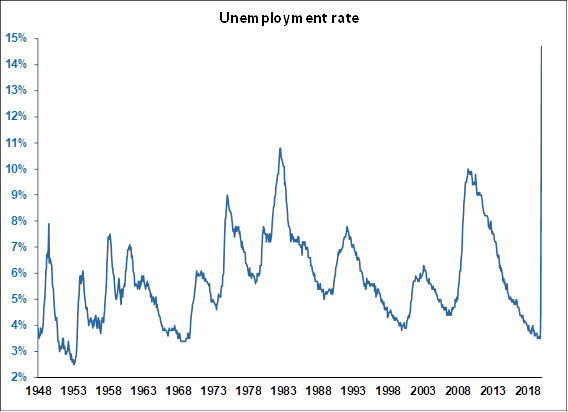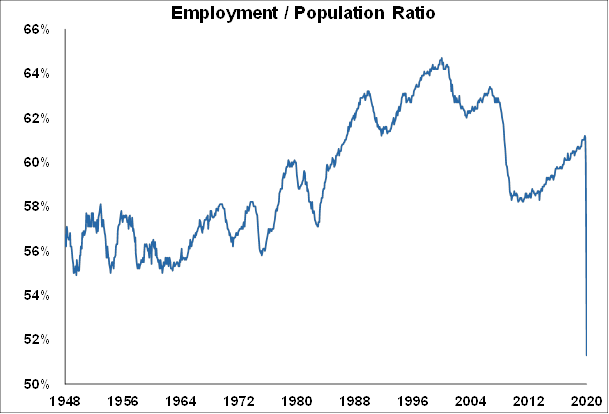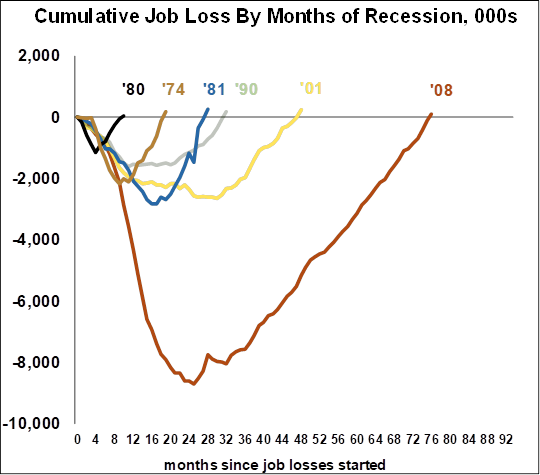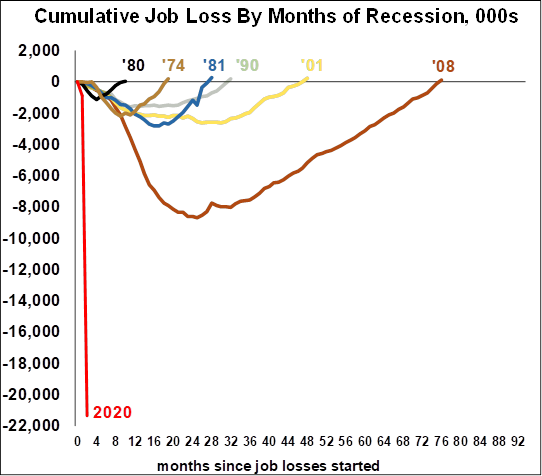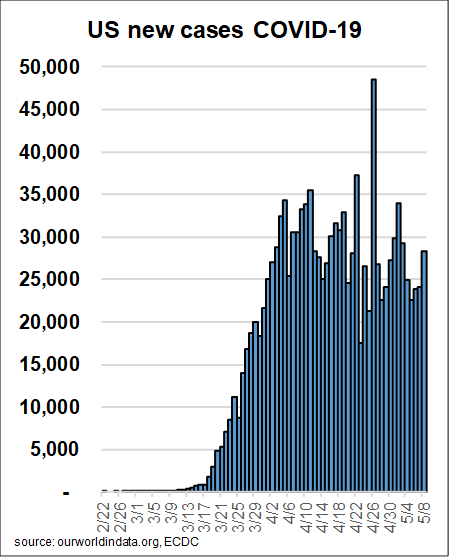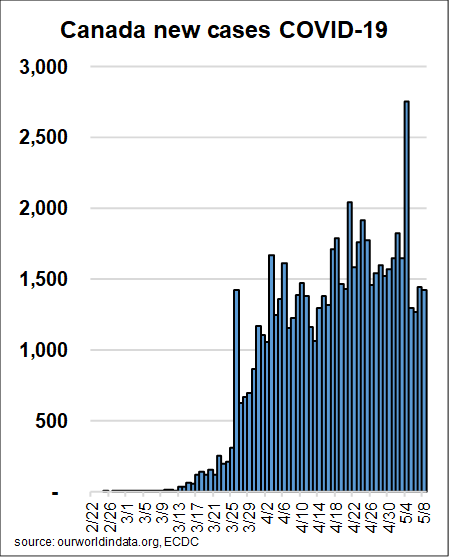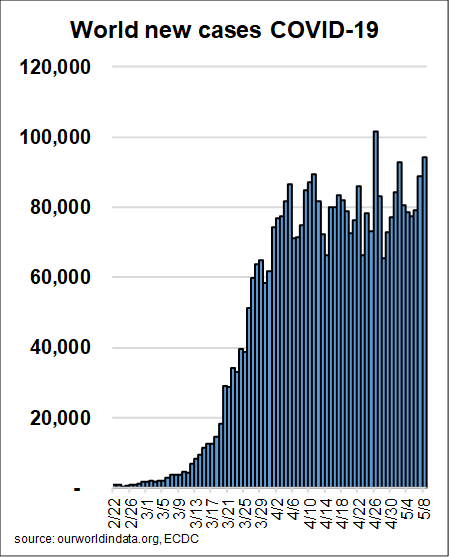US Economic News
The April employment report showed wide-spread devastation, even if it was slightly better than expectations.
- The economy lost 20.5 million jobs, a bit better than expectations, but really, who cares if it was 20.5 million or 22 million?
- The unemployment rate shot from here to the moon, going from 4.4% to 14.7%. The 10.3% increase was by far the biggest on record, easily surpassing the previous record of 1.3%. Note that just two months ago it was at a 50 year low of 3.5%. It’s the speed of the increase more than the magnitude which is shocking.
- The U-6, or the “real unemployment rate” took a similar ride going from 8.7% to 22.8%, easily surpassing the previous record of 17.2%. But again it was the speed of the increase which was stunning, rising 14.1% in one month, again blowing by the previous record of 1.7%.
- There were losses in every industry, but more than half the job losses were in the two categories of retail, and leisure and entertainment.
- Since most of the job losses were in industries with lower wages, average hourly earnings actually leaped +4.7% m/m while the previous record was +0.6% m/m. The y/y rate rose to 7.9% from 3.3%, again a record.
- The employment/population ratio, which conceptually measures how much of the population is actually at work, powering the economy along posted… well, you guessed it… a record drop, and a record low.
- But, there was some good news.
- First, consider the fact that all of those numbers are in the past. Three weeks ago is a long time these days. It’s the future which is important and it’s likely that next month’s job losses will be much smaller.
- Second, of the 23 million people who identified themselves as unemployed last month, fully 18 million said they were on “temporary layoff”. In other words, the vast majority of people who suddenly became unemployed, truly believe it’s temporary, and they are probably right. All of those layoffs were due to governments closing businesses, which can be opened back up. This is a much better situation than if the jobs had been lost to an energy crisis or a financial crisis or a war for instance. We suspect that they are right, although it may take quite some time for all of them to become employed again.
Here are the pictures.
I had to double, triple check this first chart since it just looked so impossible, but it’s not.



